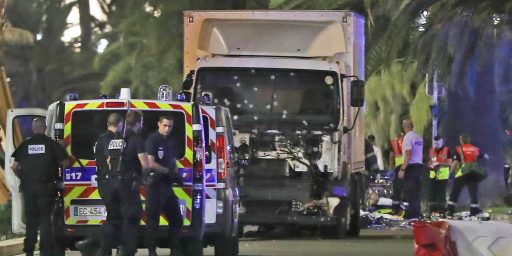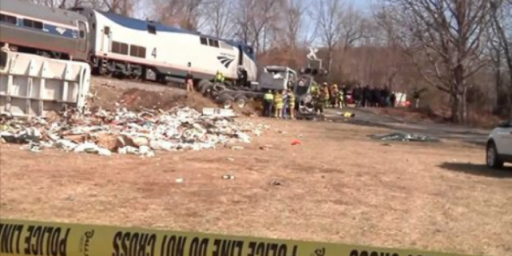Terrorism “National Planning Scenarios” Report Coming
The Department of Homeland Security’s long-awaited National Planning Scenarios, detailing the nation’s vulnerabilities to terrorist attack, is to be released in the coming months, according to reports by the AP and New York Times.
Security Report Outlines Terror Scenarios (AP) CNN, YahooNews
Homeland Security Department officials are preparing a report that catalogues a dozen ways terrorists might strike in the United States in an effort to get state and local authorities thinking about ways to block them. The department has been working for a year on a National Planning Scenarios plan that outlines a number of plausible attacks — including by nerve gas, anthrax, pneumonic plague and truck bomb. The report, still confidential, was requested by a presidential directive in December 2003 and will be made public in upcoming months, Homeland Security spokesman Brian Roehrkasse said Tuesday.
Homeland Security “has developed a number of scenarios that will aid federal, state and local homeland security officials in developing plans to become more prepared to prevent and respond to an act of terrorism, should it occur,” Roehrkasse said. The plan also “will help us better target our efforts and resources in improving the nation’s preparedness,” he said. Officials said there was no credible indication that such specific attacks were being planned.
U.S. Report Lists Possibilities for Terrorist Attacks and Likely Toll (NYT rss)
The Department of Homeland Security, trying to focus antiterrorism spending better nationwide, has identified a dozen possible strikes it views as most plausible or devastating, including detonation of a nuclear device in a major city, release of sarin nerve agent in office buildings and a truck bombing of a sports arena.
The document, known simply as the National Planning Scenarios, reads more like a doomsday plan, offering estimates of the probable deaths and economic damage caused by each type of attack. They include blowing up a chlorine tank, killing 17,500 people and injuring more than 100,000; spreading pneumonic plague in the bathrooms of an airport, sports arena and train station, killing 2,500 and sickening 8,000 worldwide; and infecting cattle with foot-and-mouth disease at several sites, costing hundreds of millions of dollars in losses. Specific locations are not named because the events could unfold in many major metropolitan or rural areas, the document says.
The agency’s objective is not to scare the public, officials said, and they have no credible intelligence that such attacks are planned. The department did not intend to release the document publicly, but a draft of it was inadvertently posted on a Hawaii state government Web site. […] The goal of the document’s planners was not to identify every type of possible terrorist attack. It does not include an airplane hijacking, for example, because “there are well developed and tested response plans” for such an incident. Planners included the threats they considered the most plausible or devastating, and that represented a range of the calamities that communities might need to prepare for, said Marc Short, a department spokesman. “Each scenario generally reflects suspected terrorist capabilities and known tradecraft,” the document says.
Planning for these scenarios makes a lot of sense, as they will create something to train against and around which to buy necessary equipment and so forth. As with military operations, these scenarios will likely not precisely reflect the actual crises with which our first responders have to deal but the baseline training and materiel acquisition created in training will be fungible.






Obviously the US government is not reading the headlines again. “Soft Targets” is what the terrorists will be looking for. Schools, churches, shopping malls, etc. Most likely an event will take place when they are the most crowded.